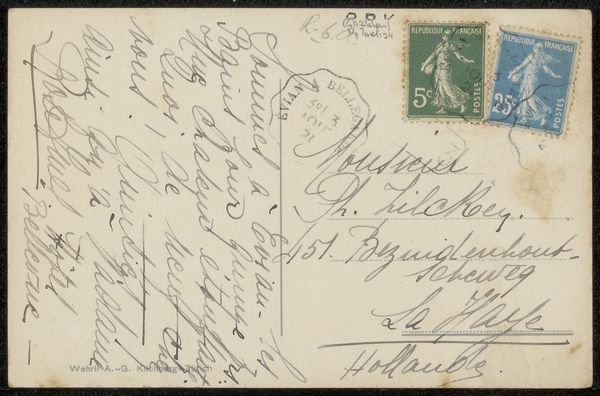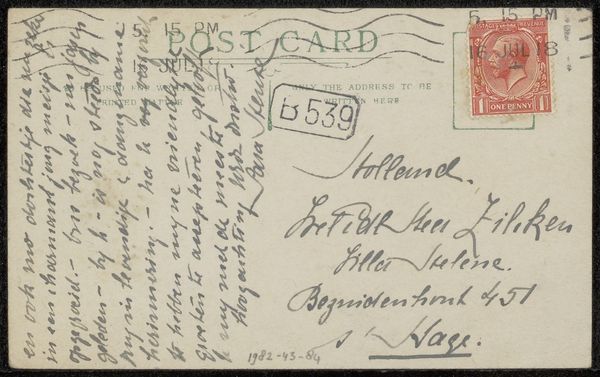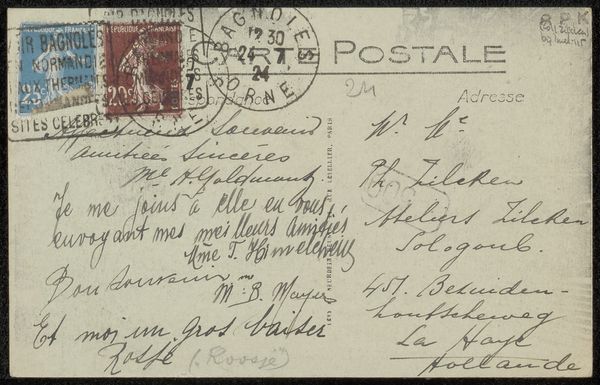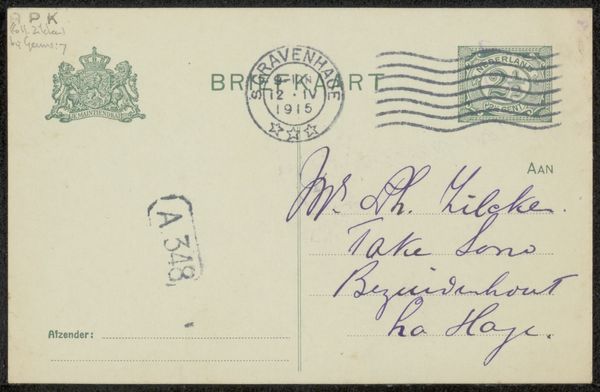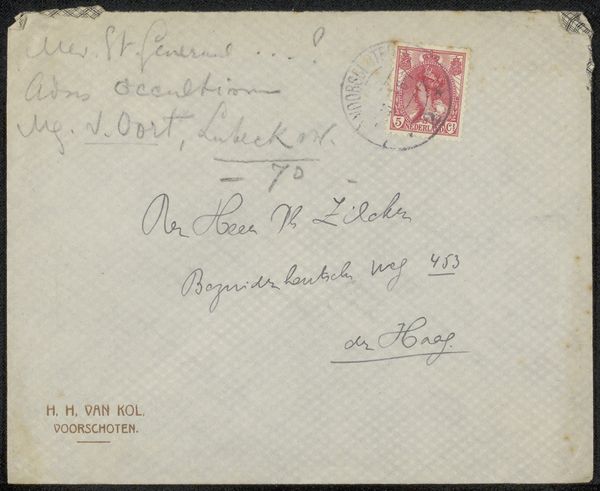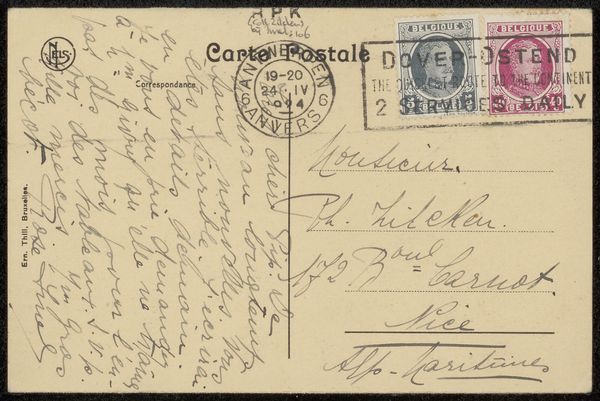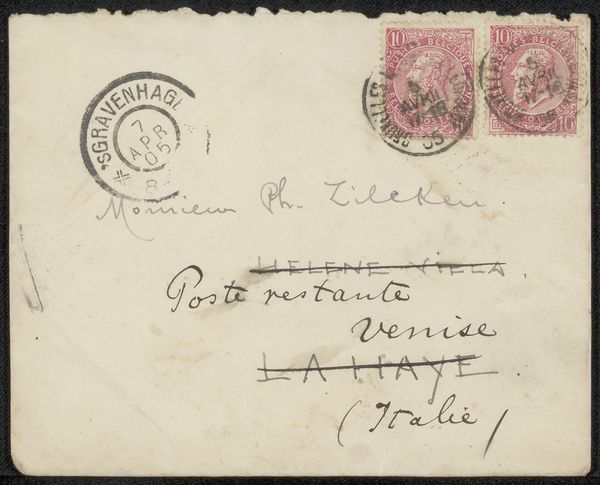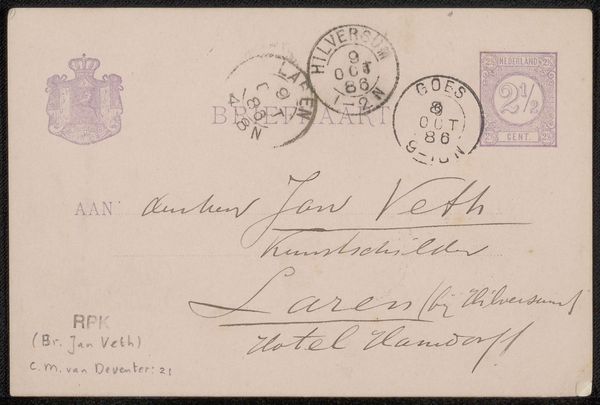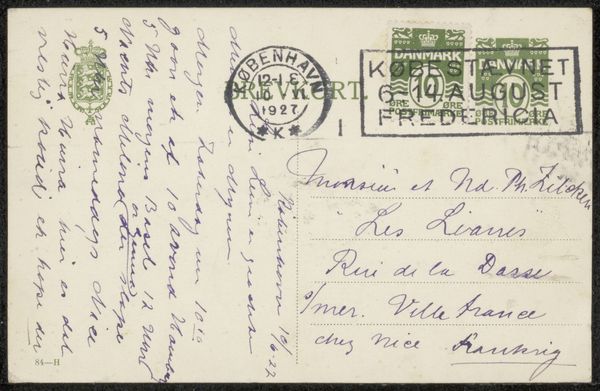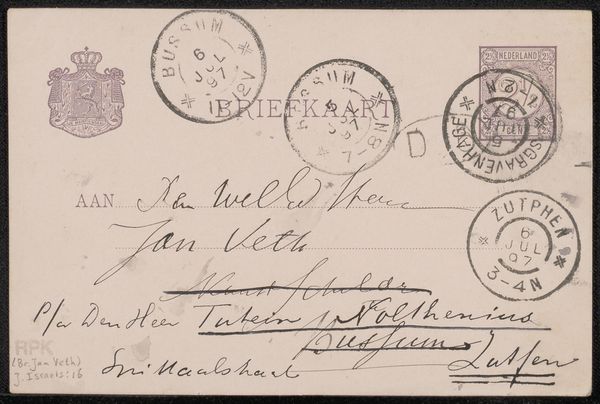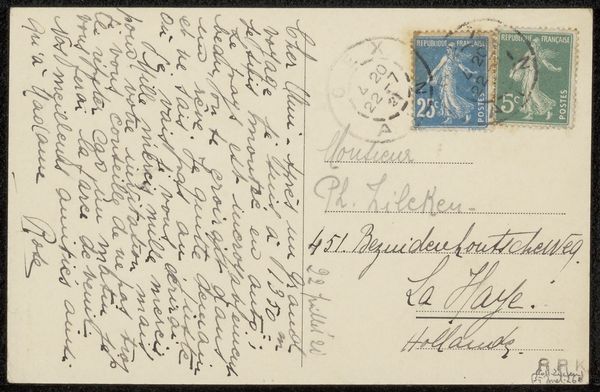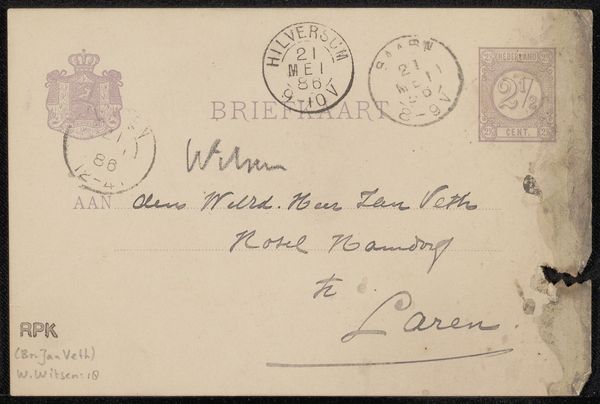
drawing, paper, ink, pen
#
drawing
#
script typography
#
hand-lettering
#
hand drawn type
#
hand lettering
#
paper
#
personal sketchbook
#
ink
#
hand-drawn typeface
#
pen-ink sketch
#
pen work
#
sketchbook drawing
#
pen
#
sketchbook art
#
miniature
#
calligraphy
Copyright: Rijks Museum: Open Domain
Editor: This is a drawing titled "Prentbriefkaart aan Philip Zilcken" by Charles Paul Gruppé, likely created before 1928. It's a postcard with ink on paper. I'm immediately struck by the script—it feels very personal and intimate. What do you see in this piece beyond a simple greeting card? Curator: The script is fascinating, isn’t it? Look at the flourishes, the almost performative quality of the penmanship. This isn't just conveying information; it's imbuing the message with personality. Each stroke carries emotional weight. The miniature format amplifies that intimacy, doesn’t it? A small, precious object. Editor: Absolutely! It's like holding a tiny piece of history in your hand. But the text itself is rather straightforward. Is there a cultural memory evoked by the style? Curator: Consider the tradition of letter writing during this era. The act itself was a ritual, and handwriting, especially practiced penmanship, signified social grace and connection. Think of it as a visual language of its own. Also, notice how the stamps depicting George Washington have a symbolic presence and confirm ties to nation and identity. Editor: So the handwriting isn’t just functional, but symbolic? It’s reflecting a bygone era of social conventions. The style really amplifies a different mood. Curator: Precisely! It reminds us how cultural memory is encoded in visual symbols. Editor: It’s easy to overlook the impact of the presentation! The handwriting suddenly feels very telling. Curator: Visual symbols evolve and morph through history. Editor: It’s really fascinating to learn about everything held in this small work!
Comments
No comments
Be the first to comment and join the conversation on the ultimate creative platform.
